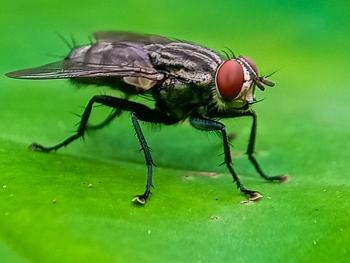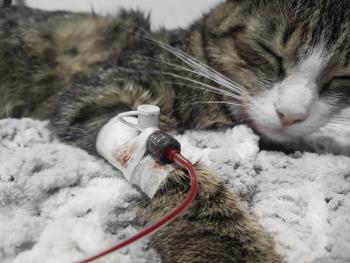
Journal Scan: Veterinary feline exams: a look at just the right approach
Full body versus passive restraint to examine cats gets a scientific trial.
The next step is yours. (adobestock.com/Syda Productions)Why they did it
With more than 100 million owned, cats are the second most popular pet in the U.S. and Canada. But veterinary visits can be stressful for cats, owners and veterinary professionals. Cats have typically been considered difficult to restrain, resulting in incomplete examinations and skipped veterinary visits. It has been suggested that inexpert handling resulting in the use of excessive force may be partly to blame. The authors explored cats' differing reactions to full body restraint and passive restraint.
Passive restraint guidance
We have oodles of articles on
What they did
Fifty-one cats from a shelter in Ontario, Canada, were selected for the study. The cats were assessed as to their willingness to approach an unfamiliar person and categorized as “friendly” or “unfriendly” based on their response. The cats were then subjected to a two-minute mock physical examination using either full body restraint or passive restraint. Time taken to place the cat in restraint was measured. Responses to the examination were also measured, including lip licking, ear and body position, pupil dilation, heart rate, tail lashing and vocalization. Cats were then released, and the time between release from restraint and the cat jumping off of the examination table was measured.
What they found
Cats placed in full body restraint exhibited higher scores for lip licking, ear and body position, and pupil dilation. The time to place the cats in restraint was significantly longer for the full body restraint. Cats examined using passive restraint stayed on the examination table longer than those examined using full body restraint. Results were similar for both “friendly” and “unfriendly” cats.
Take home points
Cats examined using full body restraint showed higher signs of stress and were more likely to seek escape from the situation than cats restrained using a passive method. These findings confirm the value of training in and use of more passive, cat-friendly restraint techniques for use in feline practice.
Reference
Moody CM, Picketts VA, Mason GJ, et al.
Dr. Michael Nappier is assistant professor of community practice in the Department of Small Animal Clinical Sciences at the Virginia-Maryland College of Veterinary Medicine in Blacksburg, Virginia.
Newsletter
From exam room tips to practice management insights, get trusted veterinary news delivered straight to your inbox—subscribe to dvm360.




